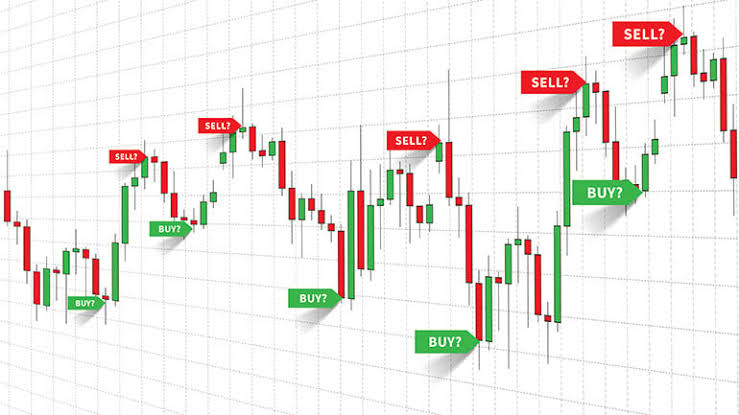Forex trading, also known as foreign exchange trading or simply Forex, is a decentralized global market where participants buy, sell, exchange, and speculate on the value of different currencies. This vast financial market operates 24 hours a day, five days a week, and it’s the largest and most liquid market in the world. In this comprehensive guide, we will delve into the world of Forex trading, explaining its fundamentals, how it works, and how you can start trading in Forex.

Part 1: Understanding Forex Basics
1.1 What is Forex Trading?
Forex trading involves the exchange of one currency for another at an agreed-upon exchange rate. It’s a necessity for international trade and finance, but it also provides opportunities for traders to profit from currency fluctuations.
1.2 Major Currencies
In Forex, currencies are traded in pairs, such as EUR/USD (Euro/US Dollar) or USD/JPY (US Dollar/Japanese Yen). Major currency pairs are the most traded and include currencies like the US Dollar, Euro, Japanese Yen, British Pound, and Swiss Franc.
1.3 Exchange Rates
Exchange rates represent the relative value of one currency to another. These rates fluctuate based on economic, geopolitical, and market factors.
Part 2: How Forex Trading Works
2.1 Market Participants
The Forex market comprises various participants, including banks, financial institutions, corporations, governments, and individual retail traders like you. Central banks also play a significant role by influencing interest rates and currency supply.
2.2 Trading Hours
Forex operates 24 hours a day, five days a week, due to the global nature of the market. Trading begins in Asia and moves through Europe and North America, allowing for continuous trading opportunities.
2.3 Leverage and Margin
One of the key features of Forex trading is leverage. Leverage allows traders to control a larger position size with a relatively small amount of capital. However, it also increases the potential for both gains and losses. Traders often use margin accounts to access leverage.
2.4 Broker Selection
To trade Forex, you’ll need to choose a Forex broker. Ensure your broker is reputable, regulated, and offers the trading platform and currency pairs you prefer. Research is crucial when selecting a broker.
Part 3: Getting Started with Forex Trading
3.1 Education and Knowledge
Before you start trading, it’s essential to educate yourself about the Forex market. Understand key concepts like technical and fundamental analysis, trading strategies, and risk management.
3.2 Create a Trading Plan
Develop a trading plan that outlines your goals, risk tolerance, and trading strategy. A well-defined plan can help you stay disciplined and manage your trades effectively.
3.3 Demo Trading
Most brokers offer demo accounts that allow you to practice trading with virtual money. This is an excellent way to familiarize yourself with the trading platform and test your strategies without risking real capital.
3.4 Fund Your Account
Once you’re comfortable with your trading skills, fund your live trading account. You can start with a relatively small amount of capital, but ensure you can afford to lose it. Never trade with money you can’t afford to lose.
Part 4: Trading Strategies
4.1 Technical Analysis
Technical analysis involves studying historical price charts, patterns, and indicators to predict future price movements. Traders use tools like moving averages, Fibonacci retracements, and RSI (Relative Strength Index) to make trading decisions.
4.2 Fundamental Analysis
Fundamental analysis focuses on economic and geopolitical factors that affect currency values. Traders analyze economic indicators like GDP, interest rates, inflation, and political events to make informed trades.
4.3 Risk Management
Risk management is crucial in Forex trading. Set stop-loss orders to limit potential losses and use proper position sizing. Never risk more than a small percentage of your trading capital on a single trade.
Part 5: Trading Execution
5.1 Placing Orders
In Forex, you can place different types of orders, including market orders (buy or sell at the current market price), limit orders (buy or sell at a specific price), and stop orders (trigger a trade when a certain price level is reached).
5.2 Monitoring and Analysis
Once your trades are active, monitor the market closely. Be prepared to adjust your stop-loss and take-profit levels as needed.
Part 6: Psychology of Trading
6.1 Emotional Control
Emotions like greed and fear can have a significant impact on trading decisions. Developing emotional discipline and sticking to your trading plan is essential.
6.2 Patience and Persistence
Forex trading is not a get-rich-quick scheme. It requires patience, practice, and continuous learning. Be prepared for losses and setbacks along the way.
Part 7: Risks and Rewards
7.1 Potential Rewards
Forex trading offers the potential for substantial profits, especially with leverage. Successful traders can make a living or supplement their income through Forex.
7.2 Risks
Forex trading also carries significant risks. The high leverage can magnify losses, and the market’s volatility can lead to unexpected outcomes. It’s possible to lose more than your initial investment.
Part 8: Conclusion and Resources
In conclusion, Forex trading is a dynamic and potentially rewarding endeavor that offers opportunities for financial growth. However, it requires a deep understanding of the market, discipline, and risk management. Continuous learning and practice are essential for success in this challenging but exciting field.
To get started, you can find a wealth of educational resources online, including books, video tutorials, and forums where experienced traders share insights and strategies. Remember that success in Forex trading comes with time and experience, so start small, stay informed, and remain patient as you navigate the world of currency trading.